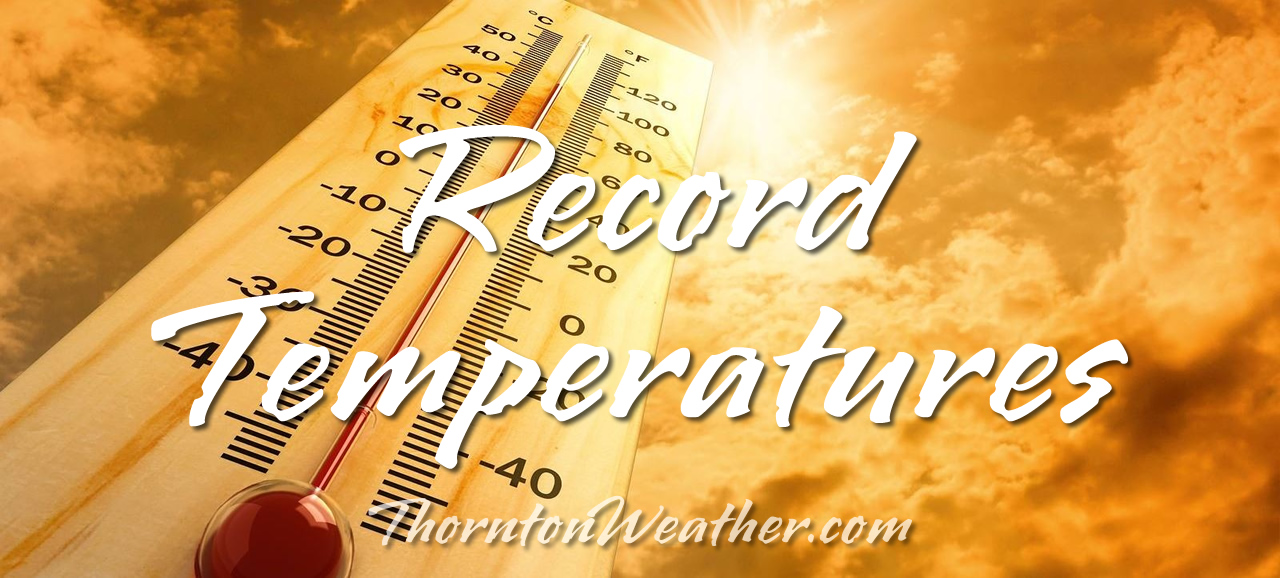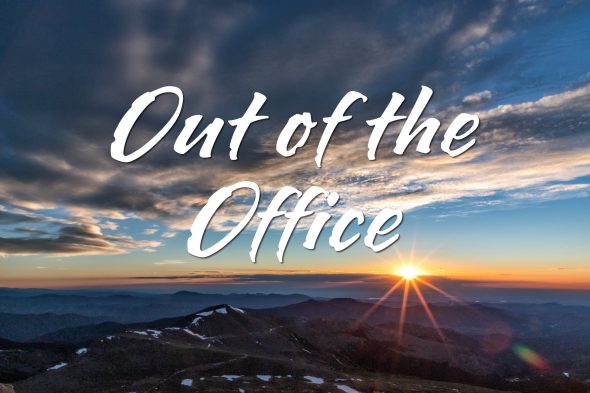Monsoonal rain, dangerous lightning and large hail are all par for the course as we see in our look back at this week in Denver weather history. But, what about snow? Yes, you read that right. Denver did actually record snowfall on July 17, 1872 but because it occurred before official snowfall measurements began in the young Mile High City, it doesn’t count. See below for complete details.
From the National Weather Service:
1-18
In 1874…a streak of 18 consecutive days of 90 degrees tied for second with another streak that was later set in the summer of 1901. The record of 24 consecutive days was established in the summer of 2008.
1-31
In 2012…it was the hottest July on record in Denver since weather records began in 1872. The average temperature for the month was 78.9 degrees which was 4.7 degrees above normal. There were 27 days in which the high temperature equaled or exceeded 90 degrees…which established a new record. There were also 7 days in which the temperature equaled or exceeded 100 degrees which tied the record set in 2005.
6-23
In 1901…a streak of 18 consecutive days of 90 degrees tied for second with another streak set in the summer of 1874. The record of 24 consecutive days was established in the summer of 2008.
7-25
In 1934…a streak of 15 consecutive days of 90 degrees ranked 5th on the list of hot streaks. The record of 24 consecutive days was established in the summer of 2008.
13-5
In 2008…a streak of 24 consecutive days of 90 degrees shattered the previous record of 18 consecutive days established in 1901 and 1874. Ironically…no new single day record high temperatures were set in the month of July. In August however…a record of 104 degrees was set on the 1st…and another record of 103 degrees was set on the 2nd. In addition…a record low min of 70 degrees was set on August 2nd.
14
In 1878…the temperature reached a high of 100 degrees in downtown Denver.
In 1906…a thunderstorm produced north winds sustained to 52 mph and 0.53 inch of rain in 10 minutes.
In 1912…a heavy thunderstorm cloudburst in the late afternoon combined with a similar storm to the south of the city to produce widespread flooding on Cherry Creek in downtown Denver…which resulted in two deaths and several injuries. The flooding was the worst since 1864 and covered around 3 square miles of lower downtown. Bridges along Cherry Creek were washed out and water lapped at the floor of the Broadway bridge over the South Platte River…causing authorities to declare it unsafe except for pedestrians. By nightfall… Union Depot was under 2 to 3 feet of water…and railroad and street car traffic was stalled. Those forced from their homes by the surging flood waters took refuge in the Denver auditorium. The flood waters caused great damage to the sewerage system…parkways…bridges and residences and commercial warehouses near Cherry Creek in the wholesale district. Flood damage was estimated at several million dollars. Heavy thunderstorm rainfall of 2.00 inches…of which nearly 1.75 inch fell in 30 minutes in central Denver… Was accompanied by severe thunderstorm winds sustained to 55 mph with gusts as high as 74 mph.
In 1933…thunderstorm rainfall was only 0.01 inch…but northwest winds sustained to 37 mph with gusts to 47 mph produced a dust storm for about 10 minutes during the late afternoon.
In 1967…heavy rain flooded areas of north and west metro Denver…and high water closed street intersections in the city. Crops were damaged…and 200 chickens drowned by flooding northwest of Denver where farm buildings and irrigation facilities were also damaged.
In 1969…a thunderstorm wind gust to 51 mph was recorded at Stapleton International Airport.
In 1975…heavy rains caused locally heavy flash flooding along Niver Creek south of Thornton and in other parts of north metro Denver. Over 40 thousand dollars in damage to public property was reported…and numerous homes and yards were damaged.
In 1986…thunderstorm winds blew down a power line in west- central Jefferson County. The storm…as it moved into Denver…snapped tree limbs and damaged a fence near Washington Park. Wind gusts in the area were estimated at 80 to 85 mph.
In 1990…thunderstorm wind gusts to 58 mph were recorded at Buckley Field in Aurora. No damage was reported. Winds gusted to 44 mph at Stapleton International Airport.
In 1993…a severe thunderstorm moved across southern sections of metro Denver. Dime size hail fell in Lakewood…and hail up to one inch diameter was measured at Cherry Creek Reservoir. Later in the afternoon…hail to one inch diameter fell in Golden and Arvada.
In 1994…hail to 1 1/4 inches in diameter fell north of Bennett.
In 1998…dry microburst winds estimated to 70 mph snapped tree branches up to 4 inches in diameter in Brighton where some road signs were twisted and blown down. At Denver International Airport…dry microburst winds gusted to 61 mph.
In 1995…thunderstorm winds gusted to 62 mph near Strasburg.
In 2001…a severe thunderstorm dumped hail to 3/4 inch in diameter in the foothills about 10 miles northwest of Golden.
In 2011…severe thunderstorms in the Denver metropolitan area produced very heavy rain…large hail and damaging winds. The strong winds toppled a few trees and the heavy rain caused street flooding and minor flash flooding. Several cars were stranded at the intersection of Santa Fe Drive and Oxford…and near Broadway and U.S. Highway 285. A 16-yr old teenager was seriously injured when he tried to retrieve a ball along the banks of west toll gate creek. He was pulled from the swollen creek and died several days later. Hail up to one inch in diameter was reported around the area. The thunderstorms also produced frequent lightning. One strike sparked a fire at aspen academy…a private school in greenwood village. Most of the damage was confined to the roof and attic. In Englewood…a 40-ft tree was blown into a house and knocked down some power lines. At Denver International Airport…a severe thunderstorm produced sustained winds of 47 mph and a peak wind gust to 68 mph.
In 2019…a Denver man was killed and his wife injured after he was struck by lightning when they were hiking near the Bear Peak West Ridge Trail. The man was likely hit from a direct lightning strike to his upper body. His wife was not directly hit…but injured by the electrical current from the strike that hit her husband.
14-15
In 1985…thunderstorms dumped heavy rain and hail at numerous locations along the Front Range from Denver north. Some of the heaviest rain fell in northern and western suburbs of Denver. Up to 2.6 inches of rain drenched Arvada…and Thornton was soaked with 2 inches in 45 minutes. At least 5 homes in Arvada suffered extensive damage from water and mud…and many streets and basements were flooded.
In southern Jefferson County…11 homes were struck by lightning.
15
In 1879…a terrific hail storm occurred in the vicinity of Buffalo Station on the South Park Railroad in the South Platte River Canyon about 39 miles south of Denver. Stones as large as hen’s eggs fell thick and fast and broke nearly every pane of glass in the windows of the building. A “waterspout” or cloudburst caused much loss of property from flash flooding on a nearby gulch. The torrent of water caused a deafening roar as it uprooted trees and carried huge Boulders and other debris. It struck the house and sawmill simultaneously and carried them away like straws…leaving little behind. The water continued to rush down the gulch for several hours. Serious damage was done to the south park railroad. The track and roadbed were destroyed for several miles. At about the same time…heavy rains in the vicinity of the headwaters of Cherry Creek produced a rapid rise in the creek…which drowned a few head of cattle and washed away two footbridges and some fences. Only 0.10 inch of rainfall was recorded in Denver.
In 1896…a thunderstorm produced sustained southwest winds to 40 mph with gusts to 46 mph.
In 1902…the temperature reached a high of 100 degrees in downtown Denver…which was a record maximum for the date.
In 1929…a thunderstorm did considerable damage to property in the eastern portion of the city. Heavy hail ranging in size from 1/4 to 3/4 inch in diameter…severe lightning… And high winds accompanied the heavy rain. Basements were flooded…and streets were impassable in places for several hours due to the heavy rainfall. Lightning damaged several telephone poles. Hail did extensive damage to gardens and flowers. The hail was up to a foot deep in places. There was no estimate of damage from the storm. A thunderstorm produced only a trace of rain and east winds to 24 mph in downtown Denver.
In 1959…thunderstorm rain totaled 0.41 inch in 8 minutes and winds gusted to an estimated 50 mph near downtown Aurora where half inch diameter hail was also reported. After the storm moved to the east…complete double rainbows were observed from the weather bureau office at Stapleton Airport.
In 1962…hail pelted the area in Adams County around Henderson and Brighton…causing extensive damage to corn…grain… Beets…and row crops. Crop damage was estimated at 250 thousand dollars.
In 1963…a man received severe burns when struck by lightning while painting a building in south Denver.
In 1965…a state patrolman sighted a tornado near Bennett. It touched down over open ground…but caused no damage.
In 1967…heavy rains flooded streets and underpasses in south Denver. Heavy rain and minor wind damage were reported in Wheat Ridge…Aurora…Englewood…and Littleton. Basements were flooded and power disrupted. The clouds and rain resulted in a high temperature of only 72 degrees…which was a record low maximum for the date.
In 1974…a severe lightning storm damaged several homes and caused a number of power outages in both Denver and western Arapahoe counties.
In 1975…lightning killed a girl west of Boulder.
In 1982…winds gusted to 60 mph at Stapleton International Airport…and strong winds blew down walls at a construction site in Aurora where a nearby tree was uprooted.
In 1985…0.79 inch of rain fell in 30 minutes at Castle Rock. Much of the town lost power when lightning struck the town’s transformer.
In 1992…a man was struck by lightning while horseback riding near Castle Rock. Two people were struck by lightning near Highlands Ranch in south metro Denver. A man was struck by lightning while riding in the back of a pick-up truck in Franktown. All received minor injuries. Strong thunderstorms moved through east metro Denver…producing large hail and flash flooding. Hail up to 1 1/4 inches in diameter fell near Buckley Air National Guard base. Rainfall of 1 to 3 inches fell in Aurora in less than an hour…leaving water up to 18 inches deep in some areas. Thunderstorm rainfall was measured at 0.97 inch at Stapleton International Airport…where 3/8th inch diameter hail fell and south winds gusted to 44 mph.
In 1993…dime size hail fell in Golden. National weather service observers at Stapleton International Airport sighted a small rope-like funnel overhead for about 3 minutes before it dissipated.
In 1994…a small…short-lived tornado caused damage to a house under construction in Parker.
In 1995…thunderstorm winds of unknown strength downed trees and branches…damaging a porch and nearby cars in Denver.
In 1998…hail to 7/8 inch in diameter fell near Keenesburg.
In 2000…this date marked the end of a near record hot streak for metro Denver. The high temperature at Denver International Airport equaled or exceeded the 90-degree mark for 17 consecutive days…from June 29th. This was one day short of equaling the all-time record. The record of 18 consecutive days was set in two different years…July 1st-18th…1874 and July 6th-23rd…1901.
In 2005…severe thunderstorms produced large hail over southeast metro Denver. Hail as large as 1.75 inches in diameter fell in southwest Aurora along with 7/8 inch hail in Centennial. Hail to 3/4 inch in diameter was measured near Centennial Airport and near Watkins.
In 2015…A severe thunderstorm produced a peak wind gust to 60 mph from the northwest at Denver International Airport. In addition…0.06 inches of rainfall was also observed.
In 2016…large hail ranging in size from 1 to 2 inches in diameter struck Aurora…Castle Rock…Centennial…Greenwood Village and southeast Denver. The hail shattered windshields and caused extensive damage to vehicles.
15-16 Continue reading July 14 to July 20: This Week in Denver Weather History




